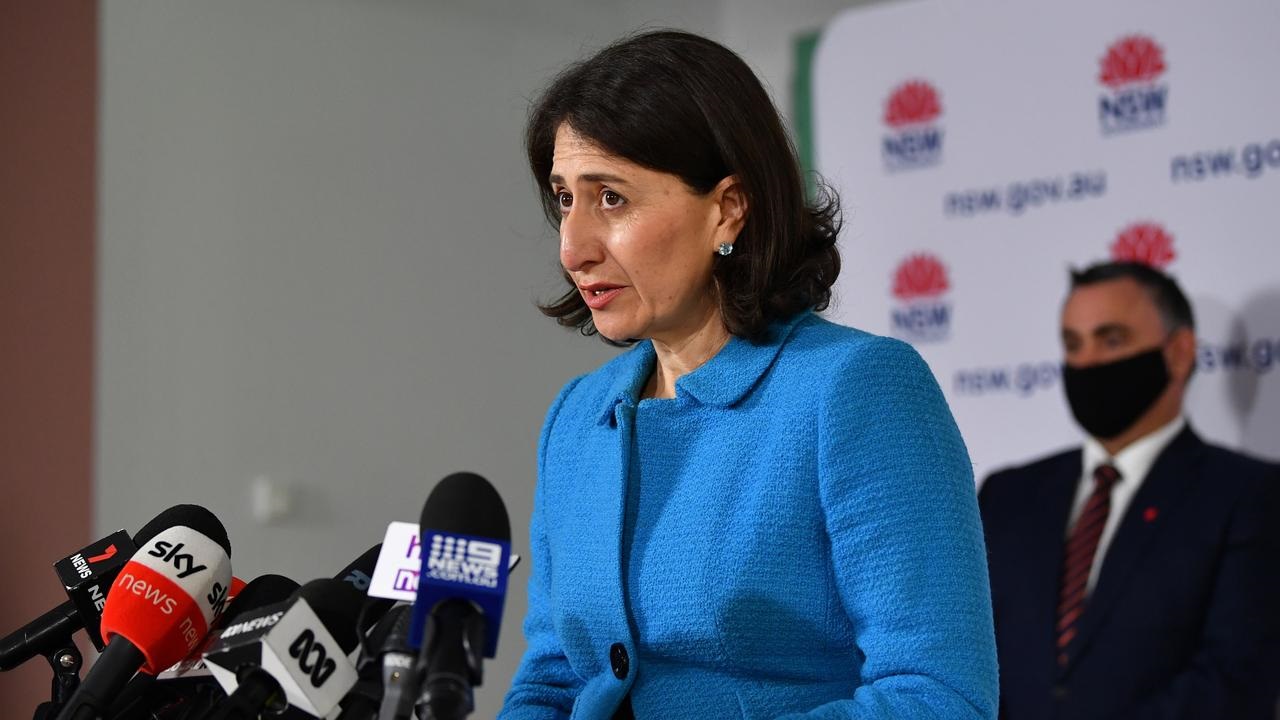NSW reports 863 new local COVID-19 cases and a record 15 further deaths


New South Wales has recorded 863 new locally acquired cases of COVID-19 and 15 further deaths – the state’s highest number in the latest outbreak.
The deaths reported in the 24 hours to 8pm on Tuesday include seven women and eight men, with their ages spanning from in their 40s to 90s. Nine of the individuals were not vaccinated.
Two people died at home, including a fully vaccinated woman in her 70s from Batemans Bay who had only recently received a second vaccine dose.
Chief Health Officer Dr Kerry Chant said there are 1,082 people in hospital, including 212 patients in intensive care.
NSW Premier Gladys Berejiklian said overall hospitalisation figures remain below the projected modelling.
“We are tracking under what we envisaged we would, but there is certainly no time for complacency,” she said on Wednesday.
More than 86 per cent of NSW residents have received at least one dose of a vaccine, with 61.7 per cent fully vaccinated.
Restrictions to be eased for aged care facilities
With vaccination rates due to reach 70 per cent double dose coverage within weeks, Premier Gladys Berejiklian announced visits to aged care homes would be allowed from 11 October.
“So long as you are fully vaccinated, two (people) at a time – and (a maximum of) two per day – are able to visit a loved one in an aged care facility,” she said, adding that she looked forward to visiting her own parents.
“This is welcome news and we ask people to exercise a degree of caution. If you have symptoms or you are not well, don’t do it. We don’t want to compromise the safety of your loved ones and those around you.”
NSW Health Minister Brad Hazzard warned people to alert to the new exposure sites arising from a COVID-positive truck driver who travelled around regional NSW and in Greater Sydney.
The locations include Tweeds Head, Byron Bay, Ballina, Coffs Harbour, Taree, Newcastle, Narrabeen, Manly, Freshwater, Brookvale.
The truck driver is now in a special health accommodation facility.
Earlier back-to-school date considered
Ms Berejiklian said 25 October is still the official return to school date for kids, although the government is reviewing options to potentially have an earlier return date.
“We are carefully considering the options to get kids to school earlier if we can,” she said.
She said NSW Health will soon release advice on contact tracing protocols and strategies to contain outbreaks in hospitality and school settings.
“We should all assume if we are at a venue where there has been a case and we were there at the same time, we will be required to isolate for that 14 days; and we should also assume that the business will be temporarily shut to do a deep clean.”
Dr Chant said businesses should be planning right now to ensure that staff members are fully vaccinated and wearing masks properly, covering their nose.
“The main issue is keeping your staff safe. Most of the outbreaks in business settings – what happens is if your staff becoming well. Staff infect other staff and that amplifies things. We minimise that by having fully vaccinated staff members,” she said.
‘Onus on individuals’
Ms Berejiklian said business owners should be reassured that the obligations to check vaccination status won’t be too onerous – with an onus placed on individuals.
“I want businesses to be assured that what they will be asked to do is not very different to what they were doing pre-Delta,” she said.
“Not much has changed. The onus will be on individuals to prove their vaccination.”
She warned that authorities would not hesitate to issue fines to those who breach the health orders.
The premier said Service NSW has been granted access to the federal government data on vaccination status and the hope is the Service NSW app is ready by 11 October, when the state is set to re-open at 70 per cent double dose vaccination coverage.
“We hope the app will be ready for the 11th. But if it isn’t there is proof of vaccine through Medicare app and checking in through QR codes.”
Dr Chant said with greater vaccination coverage in the population, localised lockdowns could still be deployed to contain outbreaks in settings like workplaces.
However, tools like vaccination and testing responses will also be used to manage outbreaks among vulnerable populations such as residents in social housing.
“We have to reflect what is a proportionate response locally when we have increasing cases,” she said.
Dr Chant said the state is on track to achieve 90 per cent single dose coverage in the population by next week.
“I want to edge it up to 93 per cent (double dose vaccination coverage), I think we can do it,” she said. “The question is how hard and how high we can go (with vaccination rates).”
Source: sbs.com.au




